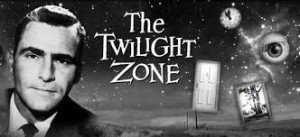 A few weeks ago HBO and then CBS announced that they would launch stand-alone online services in U.S. in 2015. Before that, Netflix had made known that it would start producing features, crushing theatrical release windows once and for all, after it had contributed to the change of the patterns of attention and the way TV series are made by releasing its House of Cards episodes all at once, as a 13-hour movie. ‘Now the real shakeout begins’, wrote Ted Hope in Hollywood Reporter. ‘We are witnessing the march from once lucrative legacy practices built around titles to a new focus on community.’ Michael Wolff, writing also in the Hollywood Reporter, disagrees: ‘Streaming services from the two networks don’t signal television’s capitulation to Netflix and the web; it’s actually the opposite, as the medium expands yet again to gobble up more revenue.’ And in that sense, he says, it will hurt Netflix and all other digital competitors.
A few weeks ago HBO and then CBS announced that they would launch stand-alone online services in U.S. in 2015. Before that, Netflix had made known that it would start producing features, crushing theatrical release windows once and for all, after it had contributed to the change of the patterns of attention and the way TV series are made by releasing its House of Cards episodes all at once, as a 13-hour movie. ‘Now the real shakeout begins’, wrote Ted Hope in Hollywood Reporter. ‘We are witnessing the march from once lucrative legacy practices built around titles to a new focus on community.’ Michael Wolff, writing also in the Hollywood Reporter, disagrees: ‘Streaming services from the two networks don’t signal television’s capitulation to Netflix and the web; it’s actually the opposite, as the medium expands yet again to gobble up more revenue.’ And in that sense, he says, it will hurt Netflix and all other digital competitors.
Tag: Inside the Writer’s Room
Television’s impressive artistic and commercial success is not a solely American phenomenon – it is not even an English language phenomenon. The case of the Danish series Borgen (2010-2013) is exemplary. Borgen brought together on average a 50% share in its home market and was shown all over the world to great acclaim. Much like The West Wing, it worked as a reminder that sincere idealism can still be part of politics, while at the same time giving a pretty nuanced idea of how politics work. Danish TV drama (shows like The Killing/Forbrydelsen of 2007-2012, The Bridge/Bron from 2010-2013, and most recently The Legacy/Arvingerne and soon-to-be-released 1864) began its revival about fifteen years ago – at the same time as its domestic film industry, and with the fiction department of the public channel DR as its driving force.
In the words of playwright Theresa Rebeck (from a talk she gave in 2010, reprinted in Women & Hollywood) : ‘It’s time to hear both sides, to hear all voices, to build a culture where stories are told by both men and women. That is the way the planet is going to survive, and it’s the way we are going to survive.’ So, how can we build that culture? Where do we start? I will list a few options to start with, and I’m inviting you to suggest more:
American TV is written for the most part by (white) men. The same applies to American movies, as well as European movies and European TV. Is it then a surprise that male characters outnumber females at least 3 to 1, even though females comprise over 50% of the population? Even more staggering is the fact that this ratio remains the same since 1946! According to Stacy Smith of the USC Annenberg School for Communication & Journalism, 80.5% of all working characters are male and 19.5% are female – in contrast, of course, to real world statistics, where women comprise 50% of the workforce.
 In the second episode of Season One of Mad Men, one of the copywriters is showing the agency to a new secretary, trying to impress her: “You know . . . there are women copywriters!” he claims. – “Good ones?” – “Sure,” he says. “I mean, you can always tell when a woman is writing copy. But sometimes she may be the right man for the job, you know?” Not much has changed since the days depicted in Mad Men. Or at least, not enough. This is still a man’s world – and sometimes a woman will get a writing job not because she is “the right man for the job” but because she is a woman.
In the second episode of Season One of Mad Men, one of the copywriters is showing the agency to a new secretary, trying to impress her: “You know . . . there are women copywriters!” he claims. – “Good ones?” – “Sure,” he says. “I mean, you can always tell when a woman is writing copy. But sometimes she may be the right man for the job, you know?” Not much has changed since the days depicted in Mad Men. Or at least, not enough. This is still a man’s world – and sometimes a woman will get a writing job not because she is “the right man for the job” but because she is a woman.
So what is the big difference between the film and TV industries? And why is American TV so successful? There are surely as many theories as there are shows, and they are probably all right. Still, allow me to add one more, based on one very important difference that I believe has been overlooked till now despite its enormous significance.
TV is known as a better place for writers than any of the other dramatic media, with the sole exception of the theater, of course. Besides, TV drama is nowadays so highly regarded that it is already changing some of the old rules regarding old industry traditions. The crossover of the boundary between cinema and TV, whereby writers can move once again from one medium to the other, with greater ease, is one of the changes. It remains to be seen whether the crossover experiment will affect the writer’s importance in other media too – especially in film.


